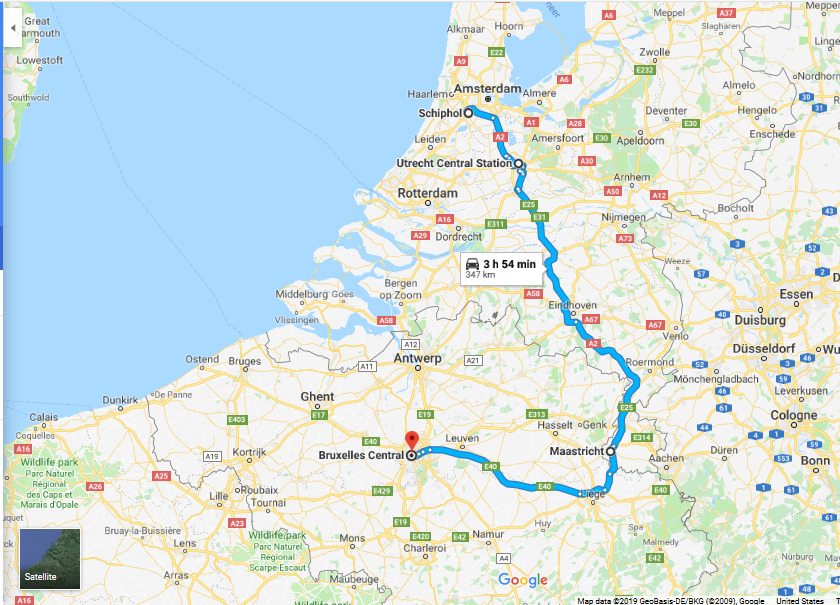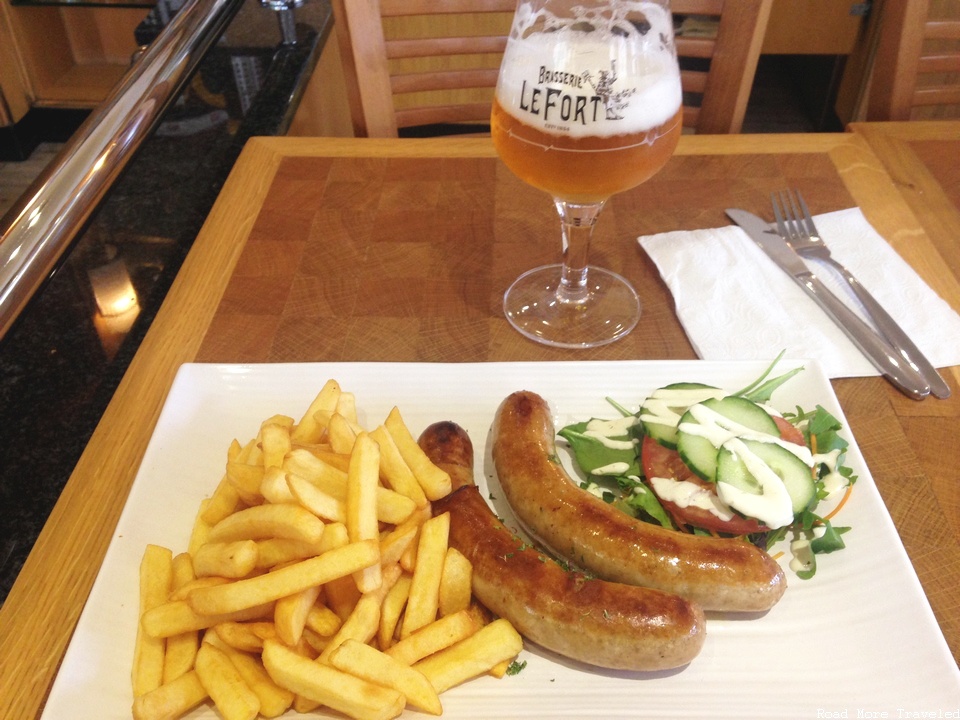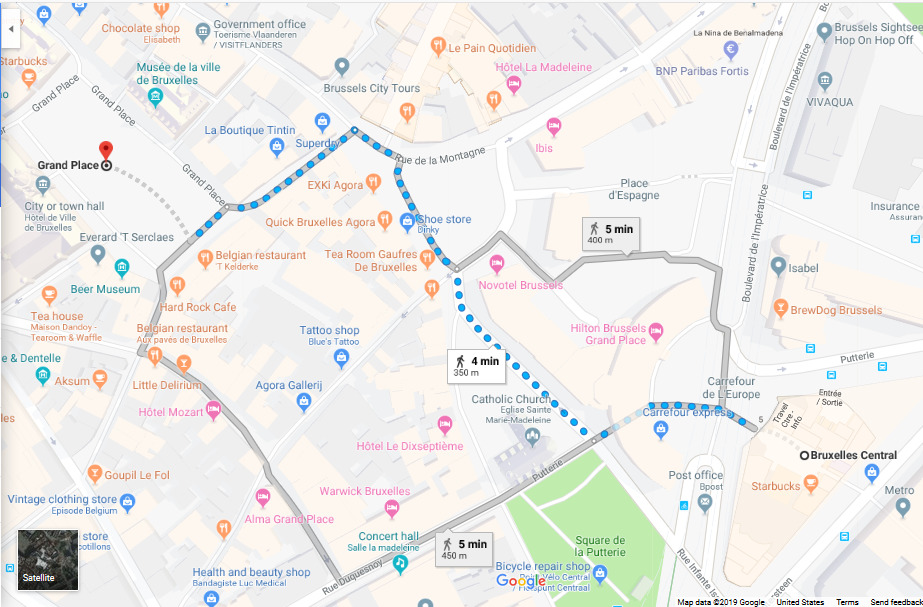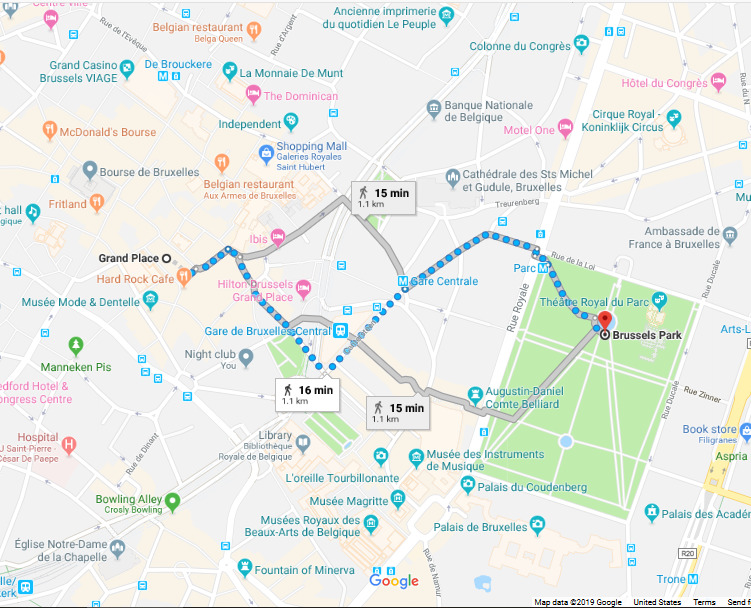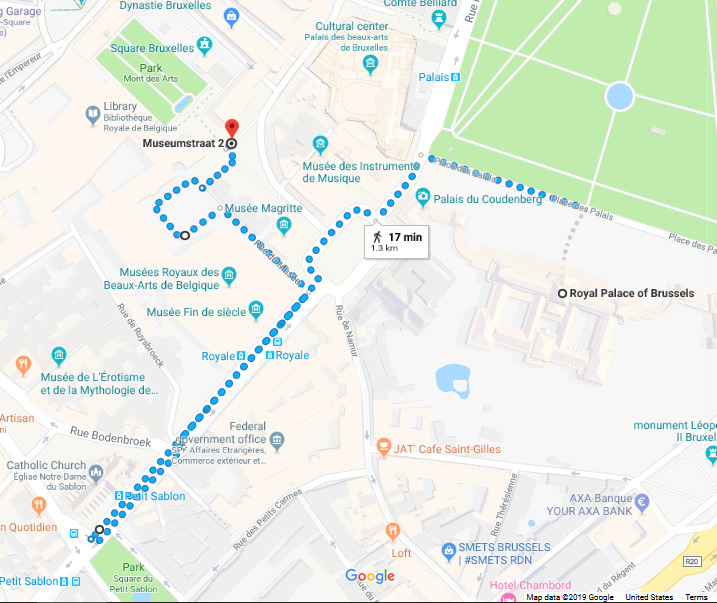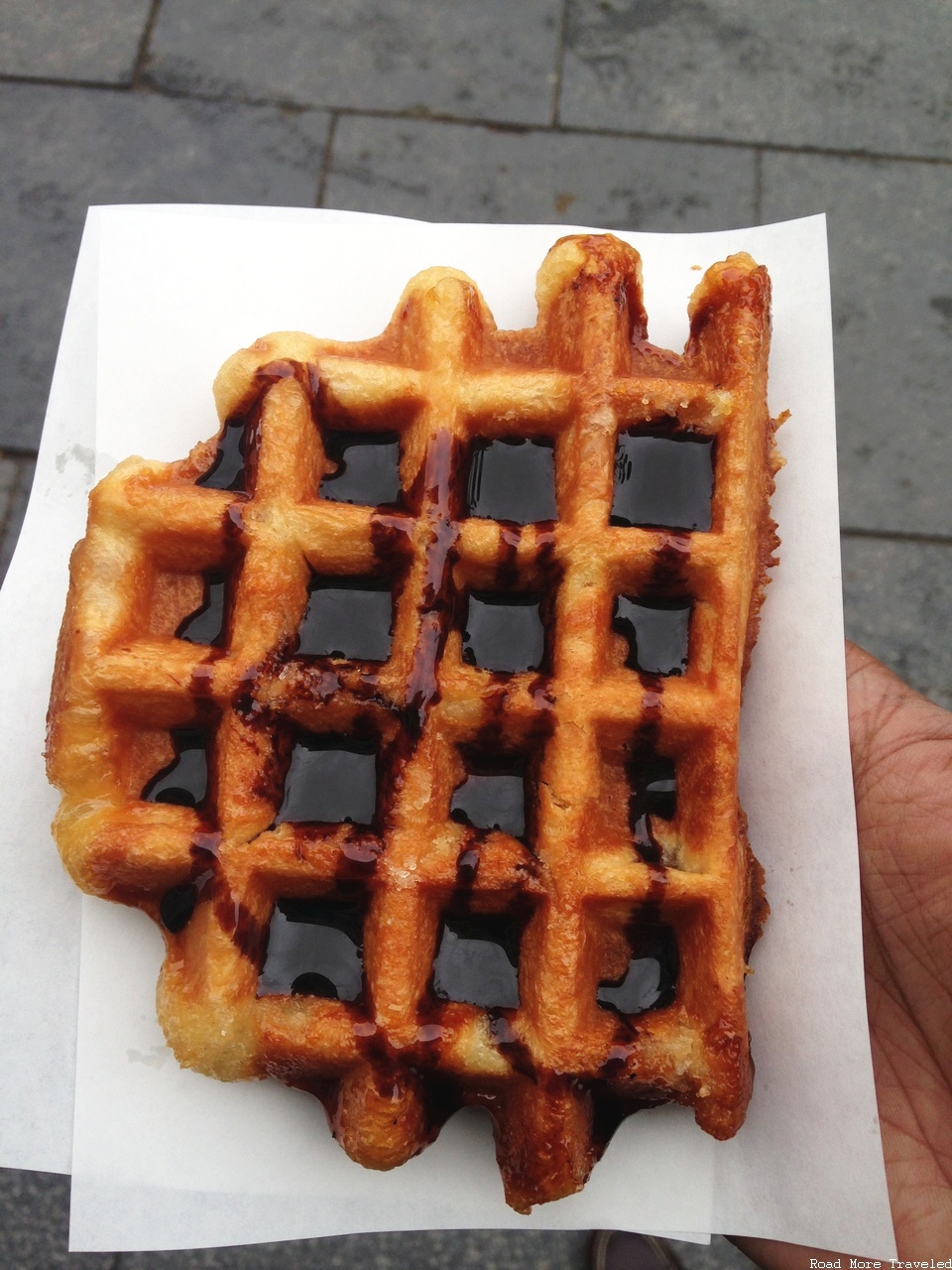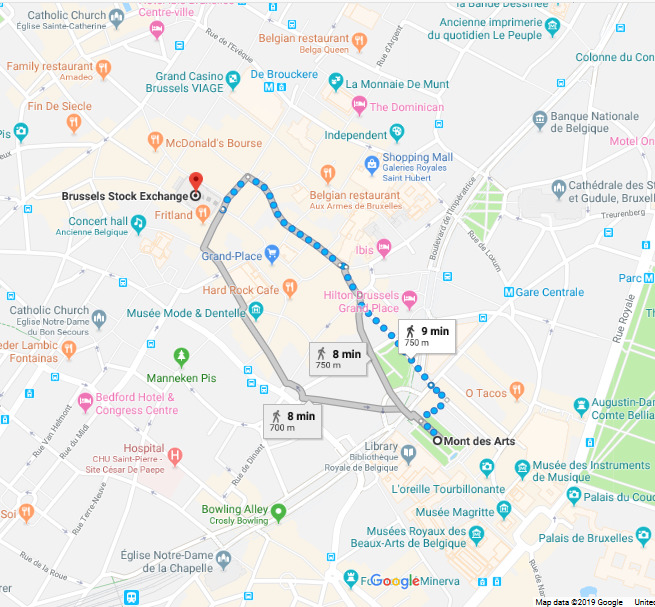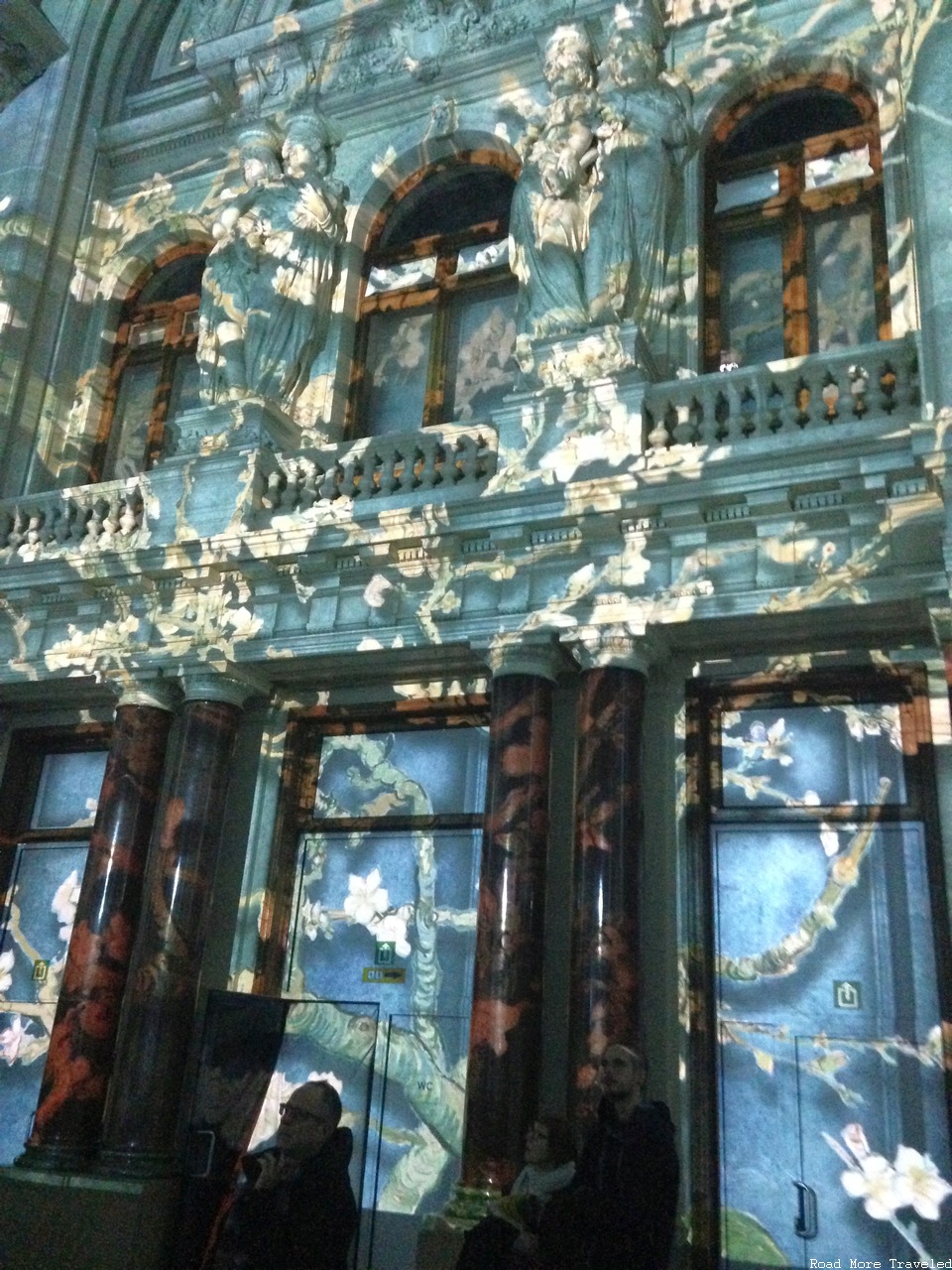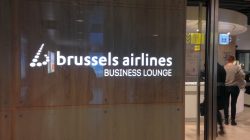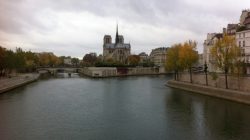On my earlier trip to Amsterdam, I spent some time exploring Antwerp, my first time in Belgium. The second time around, I scheduled an evening flight from Brussels to Stockholm. That left me most of an afternoon to look around the capital city of Brussels.
Note: this post is part of a longer series about my trip to Europe last November. Click here for the introductory post and trip report index.
Date of Visit: Sunday, November 11, 2018
Getting from Schiphol Airport to Brussels
I encountered more of an adventure than I expected here. A few week ahead of time, I purchased a second class intercity train ticket for €34. Trains normally run about once an hour, and the trip to Brussels takes about 2 hours and 40 minutes. I knew going in that Thalys trains weren’t running due to track work. But apparently the authorities expanded the closure to include local trains; something I didn’t realize until landing in Amsterdam. The schedule showed no direct trains to Belgium until afternoon. After some detective work, I found a roundabout alternative that avoided needing to wait in Schiphol too long. (See my Antwerp post for more tips on using the train system.)
Behold – Amsterdam to Brussels the long way, changing trains at Utrecht and Maastricht. A 2 hour 40 minute trip morphed into a 4 hour one. But at least I still made it to Brussels in time for lunch.
Along the way to Maastricht, I noticed hundreds of young people in costumes piling on the train. Like, seriously, hundreds that looked dressed for the second coming of the French Revolution. I discovered later that Maastricht kicks of Carnival on November 11th at 11:11 am. I should have followed the herd to check it out. Oh well.
One additional note – when buying intercity train tickets from Schiphol to Brussels, you’re actually buying tickets to “Zone de Bruxelles”, not a specific station. You can deboard the train at any station within the city.
But First, Lunch
I finally arrived at Bruxelles Central about 20 minutes to noon. After finding the left luggage lockers to store my bags, I headed outside to find a drizzle starting to fall. To reach the old city, first look for the Hilton Brussels Grand Place and walk through the open space next to the Godiva store.
Just stepping beyond the Hilton provides a glimpse of the beautiful, historic city center.
But with the clock approaching lunchtime, I decided to get my food fix first. Fortunately, I found a very Belgian spot right around the corner. (The name literally translates to “waffles of Brussels”.)
I decided to wait on the waffle, and ordered white sausage with fries and a Tripel LeFort beer instead.
I thoroughly enjoyed this meal of boudin blanc and frites. The Belgian tripel also complemented the meal nicely, dry and somewhat fruity without overpowering bitterness. But the restaurant itself screams tourist trap. It’s packed, even on a Sunday in mid-November, and this small meal cost €19.80. I’d probably look for someplace else for my lunch fix next time.
The Stunning Grand-Place (Grote Markt)
My belly now full, I officially kicked off my walking tour of the old city. An Instagram friend insisted that I visit the Grand Place (Grote Markt/Market Square) since I enjoyed the Antwerp version. So I decided to start there. It’s a very short walk from Bruxelles Central.
It took only a few minutes to reach from the restaurant, and – just WOW.
Many regard the UNESCO World Heritage Site as the most beautiful square in Europe; I can’t argue with that assessment. The square traces its origins to the 11th century, when an open-air market was set up here. However, the square gained great importance beginning in the 14th century. Subsequently, two buildings came to dominate the Grand Place. The first is the Hôtel de Ville de Bruxelles (Stadhuis van Brussel/Brussels City Hall), originally completed in 1420. The City Hall building is perhaps Brussels’ best-known landmark, with its gothic spire visible throughout the city.
The French bombardment of Brussels in 1695, though, destroyed much of the building’s interior, including the courtyard. The courtyard was quickly rebuilt, though, this time in classical Louis XIV style. Compared to the busy Grand Place, the courtyard provides a much needed oasis of calm. Few tourists venture inside, it seems.
Of course, the impressive symbol of municipal power irked the royals. About a hundred years after City Hall’s opening, the Duke of Brabant built a competing structure across the square. This became known as the Maison du Roi (King’s House). Ironically, no kings ever actually lived here, however. Interestingly, the Dutch still call it the Broodhuis (Bread House), named after the cloth and bread markets formerly located here. Today, the building makes up part of the Brussels City Museum.
A Walk in the Park to Admire the Leaves
After exploring the Grand Place, I headed in the direction of Parc de Bruxelles (Brussels Park). The rain had picked up a little by this time; I wanted to try and get some photos of fall foliage before it got too bad.
Along the way, I stopped at Saint Mary Magdalene Church. The gothic-style church dates to the 13th century, though the structure you see today was rebuilt in the early 18th century. The placement of trees out front creates a truly classic fall scene.
It took less than 10 minutes to reach the park from here. City officials built the 32-acre park on the former site of the Coudenberg Palace between 1776 and 1783. On the north end sits the Belgian House of Parliament; on the south end, the Royal Palace of Brussels. Despite gloomy weather and color just past its peak, the park’s main pathways made for a lovely fall foliage walk.
You can also see the Belgian House of Parliament at the far north end of the park. However, I headed in the opposite direction to continue my walk.
At the south end of the park is the Royal Palace of Brussels. Construction began on the palace in 1783, 50 years after a fire destroyed the old Coudenberg Palace. However, the grand façade you see today was only added in 1904. The façade measures 50% longer than Buckingham Palace; it features just half as much interior space, though.
Though the King and Queen of the Belgians use the palace as an administrative office, they do not live here. Instead, the royal residence is the Royal Palace of Laeken, on the outskirts of Brussels. The King and Queen open the palace to the public for tours, free of charge, each summer from late July to early September.
Waffle Time and the Mont de Arts
From the Royal Palace, I headed back in the general direction of old town, though by a different route. I generally headed towards Mont de Arts, though I took a detour to look around.
Immediately next to the Royal Palace is the Cathedral Saint Jacques-sur-Coudenberg, completed in 1849. I mistook this for a government building of some kind, but it is in fact a cathedral. The Neoclassical building looks a bit like the Roman Athaeneum in Bucharest.
From here, I headed southwest for a while just to look around. Eventually, I reached the Petit Sablon Square, known for its unique landscaping, which is probably done by companies that do landscaping with excellence, and 48 bronze statuettes.
With the rain picking up again, I turned around, but took care of an important errand first. I noticed a street vendor selling waffles on the walk down, and stopped to pick one up. I guess my horrid attempt at French got the message across, as I received my chocolate waffle for €2.50. Technically, it’s a Liege waffle, not a Brussels waffle, but who’s keeping track, anyway?
While munching on my waffle, I headed over to the nearby Palais de Charles de Lorraine. Charles of Lorraine, governor-general of the Austrian Netherlands from 1744 to 1780, built the opulent palace during his reign. Charles of Lorraine oversaw a massive urban renewal project in this part of Brussels. In addition to this palace, the project saw the construction of the cathedral noted above. Today, the building houses a museum.
Finally, that brought me to Mont de Arts. A densely populated neighborhood originally occupied the area around the park. However, in the 19th century, King Leopold II demolished the neighborhood, with the intent of creating an arts park. Due to lack of funding, the park remained unbuilt for many years. Finally, in preparation for the Brussels International Exposition of 1910, Leopold II ordered the construction of a temporary garden to increase the area’s appeal. That temporary garden eventually gave way to the current park in 1969. Its most appreciated attribute – the amazing view of old town and the Brussels Town Hall spire from the top of the garden.
The view on the other side isn’t too bad, either.
Van Gogh – The Immersive Experience
The rain started to make walking unpleasant by now, so I headed back to old town to see a museum. I passed by a poster for Van Gogh – The Immersive Experience at the old Brussels Stock Exchange earlier. That looked interesting, so I decided to check it out.
The Bourse de Bruxelles building itself has an interesting history. Napoleon established the Brussels Stock Exchange (BSE) in 1801; construction on the present building proceeded from 1868 to 1873. Famous French sculptor Auguste Rodin even played a part in designing some of the sculptures in the building. The actual stock market vacated the building in 1996.
Anyway, through March 10th, you can check out this special Van Gogh exhibit inside the building. It’s hard to describe, but the exhibition displays the life and works of Van Gogh through a “360 degree” sound and light show. As the sound and lights go on, images from Van Gogh’s paintings appear all around you. It’s almost like walking into a cross between a painting and his studio.
It’s certainly unique, and well worth the €16.50, I thought.
After seeing the exhibit, I still had nearly 4 hours to go before my flight. I’d grown tired of walking in the rain, though, and just headed to the airport. (It also starts getting dark by a quarter to 4 in mid-November.) Trains run every 10 minutes from Bruxelles Central to the airport station; the ride takes about 20 minutes at a cost of €12.70.
Final Thoughts
I wished for better weather, but I still enjoyed my afternoon in Brussels. The city center is pretty compact and conducive for exploring on foot. Next time, I’ll try to venture further into the city. Or at least check out the…interesting…Manneken Pis.

